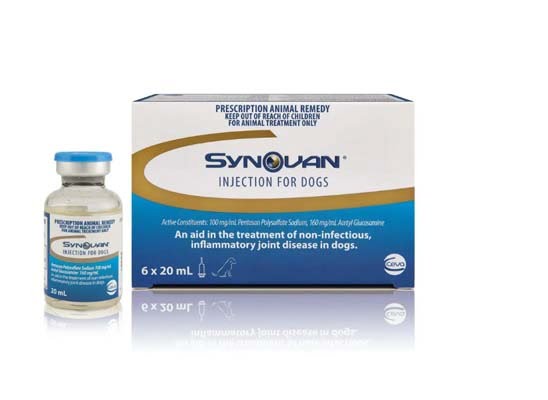Keeping you informed
Newsletter May 2022
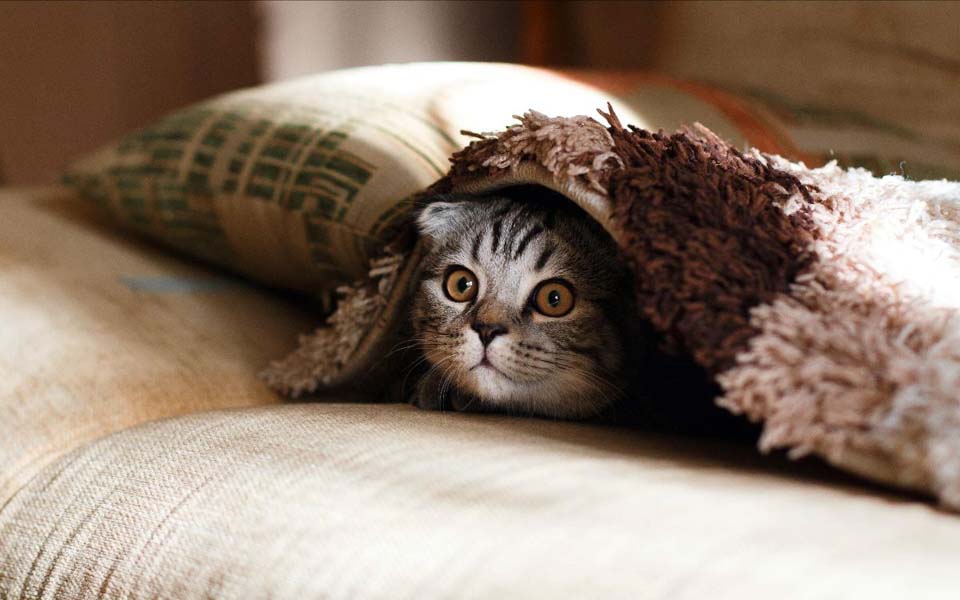
Practice News
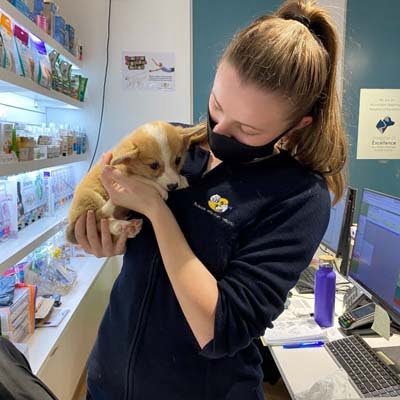
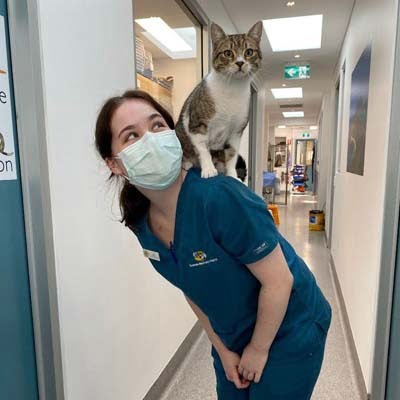
This month we are excited to welcome a new experienced veterinarian, Dr Amy Howe, into our team of wonderful veterinarians here at Turramurra Veterinary Hospital. She joins us with extensive experience consulting both in the UK and previously in private practice in Sydney. Dr Amy graduated from Sydney University in 2011 and grew up and went to school in the local area. Like all of our veterinary team, she is a passionate and hard-working professional, who is enjoying meeting the local community’s pets and their people and enjoys providing top-tier medical care for all of your lovely pets!
As always, our Pet Behaviour Consultant, Katie Bedrossian, is ready to help you and your pooches with any of your behavioural or training challenges. If you feel your dog would benefit from an in-home consultation, we now have the option of a home visit within our local area for increased convenience or for home-specific issues that need addressing.
Let us do the dog training for you!
We are now offering a Day Training Behaviour Package, which provides 10 x private training sessions with Katie to tackle a behaviour challenge of your choosing. Katie will liaise with you in the initial face-to-face session to create a personalised training plan for your dog. Katie will then conduct training sessions with your dog, before doing a handover session with you to show you what to do.
We had some great questions come through for our Ask the Vet section of our e-news, so remember if there is a question you really want to know the answer to about your pet, email it through to info@turramurravet.com.au to be included in our next edition.
The easiest way to book a veterinary consultation is to Book Online via our website at www.turramurravet.com.au or click here. Our vets are also happy to conduct a telehealth consultation where suitable, to allow extra flexibility for clients, particularly if you are isolating at home.
My Pet has a Heart Murmur – What Does this Mean?
Author: Dr. Gretta Howard – Senior Veterinarian
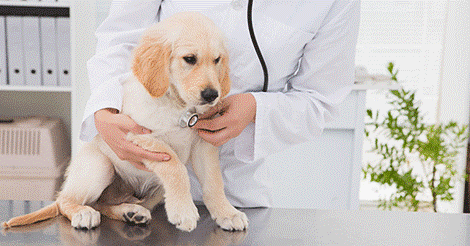
An important part of the veterinary examination is listening to your pet’s chest to check the heart sounds with a stethoscope. Sometimes during routine auscultation, a heart murmur is heard by your veterinarian.
What is a heart murmur?
A heart murmur is an abnormal sound to the heart beat, usually due to turbulent blood flow. Abnormal turbulent blood flow can occur when blood passes across abnormal heart valves or across abnormal structures within the heart.
Congenital heart murmur
Congenital heart murmurs are those heard in young animals due to an abnormality to the structure of the heart. All loud congenital heart murmurs should be immediately evaluated with a heart ultrasound known as an echocardiogram. Any soft heart murmur persisting after 18 weeks of age is likely to be significant and an echocardiogram should be performed to identify the cause of the murmur.
Acquired heart murmur
Acquired heart murmurs are not present at birth and usually occur due to a degenerative change to the valve structure. Dogs and cats can also develop a heart murmur as a result of a low red blood cell count, known as anaemia.
Should I be worried if my pet has a heart murmur?
While it is important to be aware of heart disease, having a murmur does not mean your pet has heart failure. In fact, murmurs do not always progress to affect your pet’s physical health. If your pet has other clinical signs such as lethargy, exercise intolerance, coughing or difficulty breathing, then your pet’s heart murmur may be a cause for concern, but these clinical signs can also occur with other conditions and may be completely unrelated to a murmur. That is why it is important to regularly monitor pets with heart disease. In dogs, usually the loudness of the heart murmur equates with the severity of heart disease, while cats can have a significant heart disease despite a soft murmur or barely detectable gallop rhythm.
Click on the following link to read the full article on pet heart murmurs.
Do you have both a dog and cat living in the same household? 5 tips to help them live in harmony
Author: Katie Bedrossian – Pet Behaviour Consultant
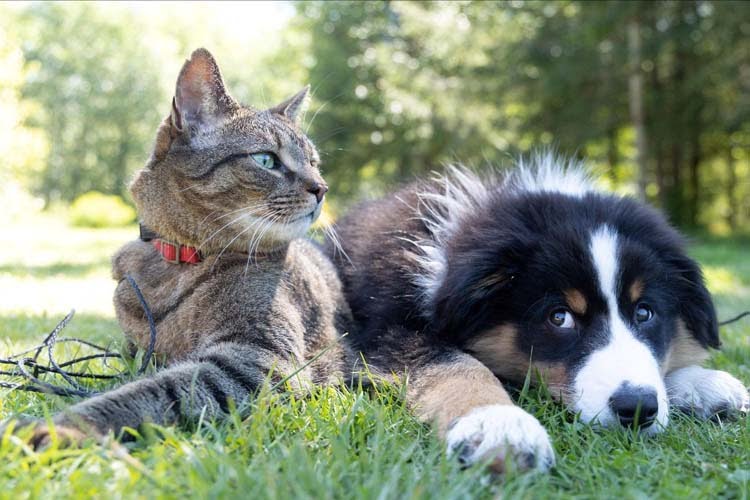
Dogs and cats have become known as natural enemies, however 1 in 5 Australian households have both a dog and a cat living under the same roof.
Despite the bad rap this relationship gets, it is possible for dogs and cats to live in harmony.
Here are my top 5 tips to build a positive relationship between cats and dogs.
- Ensure both pets have a separate space where the other can’t go (this is most important for the pet not keen on interaction). The cat’s private space is a good space to put the cat litter tray.
- Ensure both pets can eat their food without being disturbed by the other. This usually means physically separating. However, another option is to find a distance where both pets are aware of the other one eating, but they feel safe.
- Have daily individual playtime with both pets and if you have a second person available, have both dog and cat play alongside each other but physically separated.
- Prevent chasing. This often comes from the dog’s side of the relationship. This behaviour can be reduced by placing your dog on a lead or behind a barrier when your cat is nearby.
- Reward any calm behaviour with treats/food rations. To achieve calm behaviour, some pets will initially need visual barriers such as towels over pens (or corflute panels cable tied to pens for dogs that pull the towels down).
This is just a snippet of tips to help reduce any tension between cats and dogs living in the same household. Some cats and dogs need further management of anxiety and a more personalised plan before they can progress.
Once that bond is there and they trust each other (which can take up to 3 months of environmental modification and training) the relationship they have can be magical to watch.
Happy bonding!
Pet Of The Month: Willow Murray
Author: Freya Britt-Lewis – Customer Care & Pet Health Care Writer
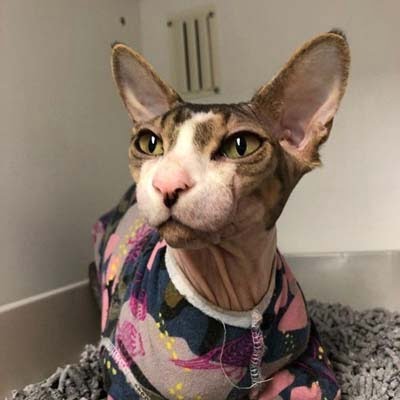

Momo came to visit us in cat boarding during the month of May and everyone at the clinic was wowed by his beautiful personality. Not only is he a unique Sphinx breed, Momo quickly became a staff favourite for being an all round sweetheart and world-expert cuddler.
He is pictured here in one of our cat condos, enjoying the holidays with his Turramurra Vet family. Check out his trendy outfit!
Staff Profile: Katie Bedrossian – Pet Behaviour Consultant

1. You started your career here as a veterinary nurse, what drove you to pursue a career working with and around animals?
All my life, I’ve always wanted to work with animals. My parents are animal lovers and along with our menagerie of pets while I was growing up, we also looked after injured and orphaned wildlife. I enjoyed the care of young animals and nursing sick ones back to health, but also had a strong interest in observing animal behaviour. I originally wanted to be a zoologist specialising in behaviour, but when I realised this, I wanted a more hands-on career, so vet nursing and pet behaviour was where I headed. The vet nursing and dog training have always been side by side from the moment I left school, with the pet behaviour role at Turramurra Veterinary Hospital becoming my sole focus since 2020.
2. What do you enjoy most about working at Turramurra Veterinary Hospital as our Pet Behaviour Consultant? Do you have any favourite moments or experiences?
I most enjoy seeing the changes in pet behaviour achieved through training and teaching and I love helping clients reach their goals. It is a fantastic feeling knowing I have helped make their day to day life more enjoyable for the owners and more enriching for their pet. I have multiple special moments each day with each dog and owner team that I see.
3. Tell us a little bit about your own family and pets?
I share my life and home with my husband, my 8 year old daughter and 6 year old son. Our furry family members are Chase, a 4 year old Swedish Vallhund, Skye, a 4 year old English Cocker Spaniel and 3 pet rats, Sunny, Luna and Molly.
Feline Friends: What is my Cat Trying to Tell Me?
Author: Freya Britt-Lewis – Customer Care & Pet Health Care Writer
Did you know, according to the Animal Medicines Australia survey, approximately 27% of Australian households own cats, with 41% of people having owned one in the past? With an average of 1.4 cats per family, it makes sense that they are the 2nd most popular species of pet. And that’s not surprising at all! As many of our clients are aware, cats can make perfect family members and companions.
Humans will mostly talk or write to express thoughts and emotions, but our cats and kittens will express themselves through body language using their ears, tail, eyes, body posture, as well as certain vocalisations. Types of emotions and behaviours that cats portray include contentedness and relaxation, fear or anxiety, play or pain.
Relaxed Body Language
Relaxed cats will usually have their ears in a neutral position, or forward if alert and attentive. Their tails will be relaxed, with the tip moving minimally. When our cats are exhibiting these behaviour signs, we know they are experiencing positive feelings.
Other examples of a relaxed cat include:
- Sitting of lying down with a relaxed body posture
- Rolling on back comfortably and exposing tummy (a sign of trust as cats with often hide tummy if feeling fearful)
- Eyes half closed, blinking slowly, casual gazing or closed as if sleeping
- Grooming body calmly
- Purring
- Kneading (otherwise known as “making biscuits”)
- Rubbing against people and other things
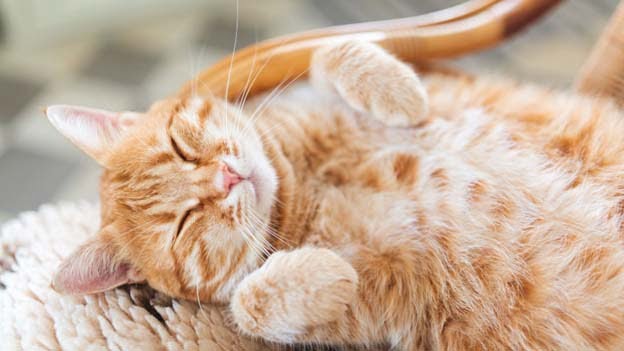
This is a very happy cat! It is lying with its tummy exposed, with minimal body tension, and its eyes closed as if sleeping.
One of the best things you can do for your cat is take the time to understand them. If you notice your cat exhibiting out of character or frequent negative emotions, a veterinary health and behaviour consultation is always an option here at Turramurra Veterinary Hospital if you are concerned. Give our helpful Customer Care team a call to book with one of our veterinarians on 9988 0198 or go to www.turramurravet.com.au to book online.
Click on the link to read the full article on cat body language.
Innovations: Synovan injections – Help your pet by improving their joint health
What can you do if your dog is showing signs of osteoarthritis? With imminent cold weather it is important we, as dog owners, are keeping an eye out for any aches and pains in our furry friends. If you suspect your dog has any of the clinical signs below, book a veterinary consultation for pain management consultation with a vet:
- Lameness
- Stiffness
- Difficulty rising after lying down
- Reduced interest in walks
- Difficulty climbing the stairs
- Loss of muscle tone in affected limb
- Depression, irritability, or reduced sociability
- Licking or biting at affected area
What is Synovan?
After an assessment and discussion of options, your vet may bring up the option of trying a course of Synovan injections. Synovan is a unique combination of two antiarthritic agents called PPS (Pentason Polysulphate) and NAG (N-Acetyl Glucosamine). These agents stimulate the building blocks of cartilage to repair and build joints as well as assisting with alleviating arthritic pain.
How does Synovan help my pet?
Synovan provides this fast, double-action joint repair over a course of 4 simple injections, each given a week apart. The first will be in consultation with one of our vets, the second and third with one of our nurses, and the last with the same vet who saw your pet at the beginning of the course. This ensures continuity of care for your pet and enables a pain management plan to be formulated for your pet.
Click on the link to read the full article on Synovan injections.
Ask the Vet!
Author: Dr. Amy Howe – Veterinary Surgeon
- Should my rabbit be on any routine vaccinations, and have any ongoing preventatives?
Rabbits in Australia are vaccinated against the rabbit calicivirus, also known as Rabbit Haemorrhagic Disease. There are three strains of rabbit calicivirus, all of which are fatal. The disease will cause internal bleeding from organ damage, and may show signs such as lethargy, poor appetite, bleeding from the nose, or may show no signs at all.The vaccination is given under the skin, and can be started from 6 weeks of age. Two vaccines 4 weeks apart are given prior to 12 weeks of age, then a booster every 10 months for life.Myxomatosis is another fatal disease of rabbits but a vaccine is not available to be used in Australia. These diseases can be transmitted by vectors such as mosquitos, so it is recommended that from dusk to dawn, a mosquito net is used to protect your bunny from getting bitten.Rabbits can pick up fleas, as well as ear and skin mites. We would recommend a routine monthly topical preventative, such as Revolution (kitten size) to prevent these parasites. - What is the importance of a balanced diet for my young puppy or kitten to grow up healthy?
For young, growing animals a balanced healthy diet is vital to ensure optimal growth and development. Puppy and kitten foods are specifically formulated for growth, and we recommend for them to remain on this diet until 12 months of age (18 months in giant dog breeds).Kittens have very different requirements compared to older cats, mainly involving the percentage of protein in the diet. But they also require the right balance of protein, fats, carbohydrates, vitamins and minerals. Specifically, essential amino acids, such as taurine, need to be included in the diet as it is not produced by the body.In pups, there is a much wider range of body size and weights they will grow to so there are different puppy diets that range from small breed to large breed, all with different vitamin and mineral contents for growth.Ensuring a diet is balanced can be difficult with home cooked or raw diet feeding, especially in the puppy and kitten stage of life. For this reason, we recommend that at least 70% of your pet’s diet contains a high quality, commercially prepared food offered daily so that your pet receives all the nutrients they need to grow into a healthy adult. - We have always given our cat a saucer of milk as a treat, but I have heard recently this isn’t good for cats. Should we stop?
We like to treat our pets occasionally, and traditionally offering milk to our cats has been considered the norm. Unfortunately, the majority of cats do not tolerate cow’s milk leading to tummy upsets. This can be seen as a reduced appetite, vomiting or diarrhoea.There are a number of ‘catmilk’ products on the market, but this is not necessary as part of a balanced diet for cats. They can also be quite fatty and contribute to weight gain and obesity.We would recommend offering treats specifically formulated for cats, and offering them in small amounts as rewards.We need to account for treats in our pet’s daily calorie intake to ensure they don’t put on any unnecessary weight!
We hope you have enjoyed our newsletter. We are always happy to receive feedback from our clients, so feel free to send a message via email to manager@turramurravet.com.au as we always strive to improve our service.
Warm regards, your locally family-owned Turramurra Veterinary Hospital team.

